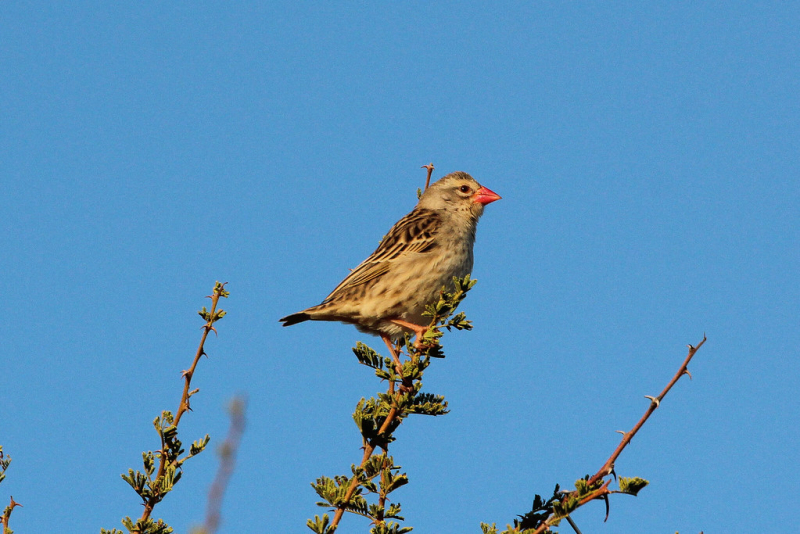Quelea

Let's fly into the world of queleas – those small birds that gather in enormous flocks, creating mesmerizing spectacles across the skies of sub-Saharan Africa. Imagine a little bird, not much larger than a sparrow, with a brownish plumage – a quelea. They're like the avian flash mobs of the African savannah, often numbering in the thousands or even millions.
Queleas are like the rock stars of the African savanna, with a range that stretches across sub-Saharan Africa. From the sun-drenched plains of Kenya to the lush grasslands of South Africa, these birds are at home wherever there's plenty of food and space to gather.
These feathered friends are seed specialists. They have short, sharp beaks perfect for cracking open tiny seeds, and they'll happily munch on just about anything green and crunchy. Grasses, grains, even fruits and buds – no snack is safe from a hungry Quelea flock. When they take flight, it's a breathtaking sight, with the sky transforming into a swirling mass of wings.
Queleas are all about the big, raucous gatherings, unlike some birds who prefer quiet solitude. They build massive communal nests in trees or bushes, with hundreds or even thousands of pairs raising their chicks simultaneously.
One remarkable thing about queleas is their incredible ability to form enormous swarms during their annual migrations. These swarms can be so vast that they're visible from space. It's like they've mastered the art of collective movement, turning the sky into a living canvas of motion. Those massive Quelea flocks can be a real headache for farmers. They can devour entire harvests in a few days when they descend on fields like a feathered locust swarm. This can have devastating consequences for local communities who rely on those crops for survival.
Queleas are the social birds that paint the African skies with synchronized flights and lively conversations. Their massive flocks, seamless coordination, and breathtaking aerial displays remind us of the wonders of nature and the intricate connections between the avian world and the landscapes they call home.















